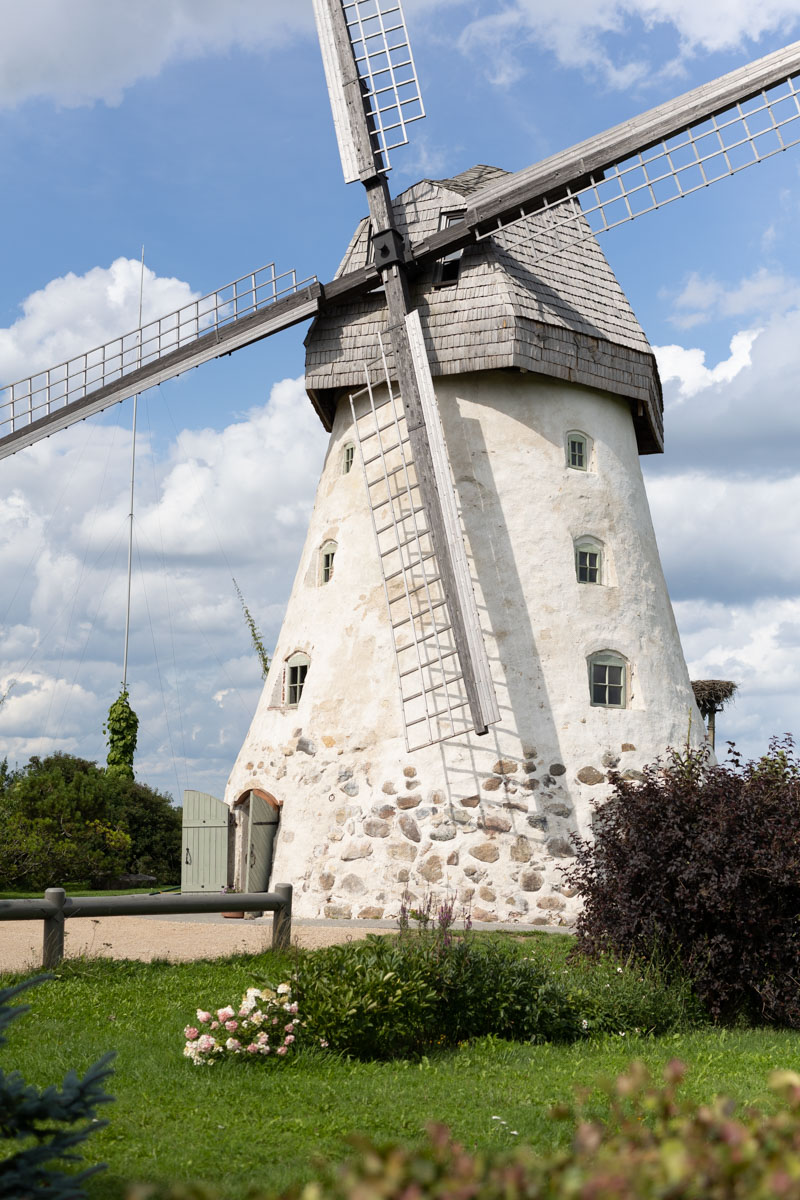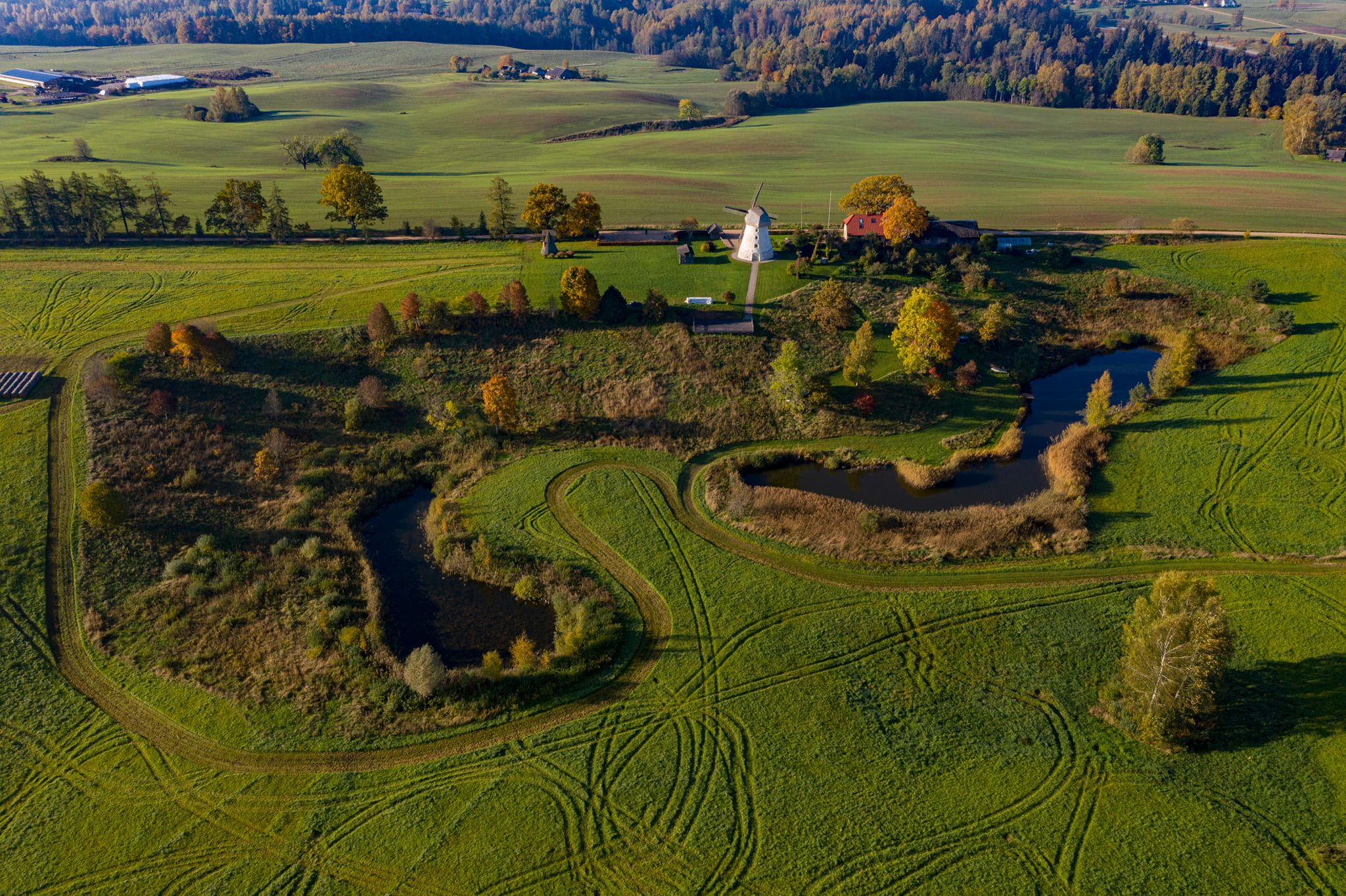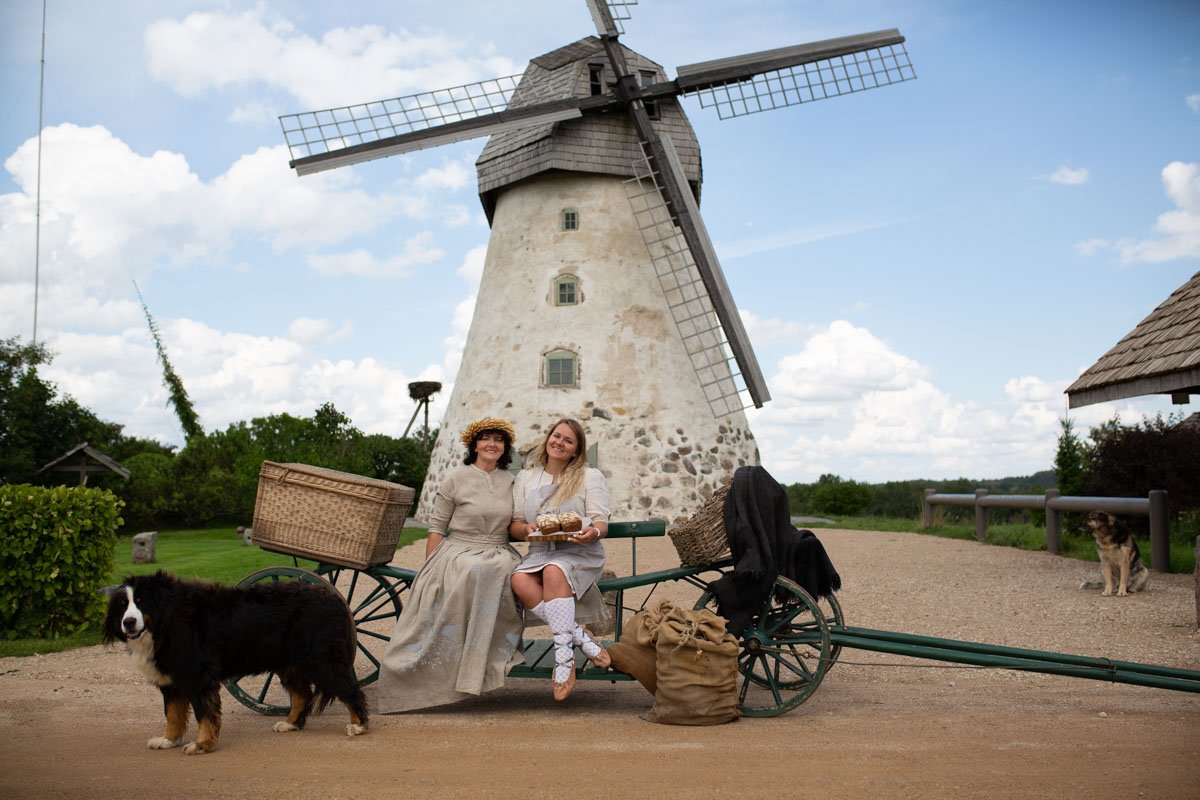Āraiši Windmill
Āraiši Windmill is probably the only place in Latvia where a wild rabbit, looping over a meadow, is the first to rush to greet visitors. Just like in the book Alice in Wonderland, Āraiši is a piece of Wonderland that can only be discovered by visiting it. At the top of the hill, you can see the noble Vējdzirnavas (Windmill), which has been hosted for the sixth generation by Vineta Cipe, a member of "Īstās Latvju saimnieces", with her daughter Asnati, dog Dūdiņa and red cat Martel. Daily bread baking, summer open-air concerts, and the annual and widely acclaimed Bread Festival are organised. And that's not all - there is also accommodation, a sauna, boating in the backyard pond and a terrace where you can celebrate the festival with a large crowd. The host herself is also happy to share stories handed down through the generations. This experience is sure to stir up the memories of some of the visitors, stories from their own ancestors. If the legend of the lightning strike on the windmill wing is still alive, then be prepared - unusual and interesting things always happen in windmills!
Let's take a look into the history of the mill:
The Āraiši windmill was built for the needs of the Drabeši manor around the 19th century. In the middle of the 19th century. During the reconstruction, a stone with the inscription ANNO 1852 was found in the wall of the mill building. By design, it is a Dutch-type windmill, which has been built near castles and manor houses in Latvia since the 14th century. The windmill has a rotatable 'head', called a 'hat'. A special mechanism was used to turn the mill's 'head' into the wind while standing at the foot of the mill.
The windmill at Drabesi Manor is also mentioned in the 1906 Dictionary of Conversation published in Riga. At that time, the mill was used to grind groats, flour for bread and fodder. For some time, the windmill had a small workshop for the construction of pianos, as milling was not as profitable. In the second half of the 20th century, the windmill was destroyed. In 1982-1984 it was restored with the support of the Gauja National Park.
During the 2018 reconstruction, the roof and facade of the mill were restored, the interior was improved, outdoor lighting was installed and new windmill wings were made. The mill is not only a decorative and historic landmark, it is also fully operational - flour, grits and other cereal products can be milled here.




